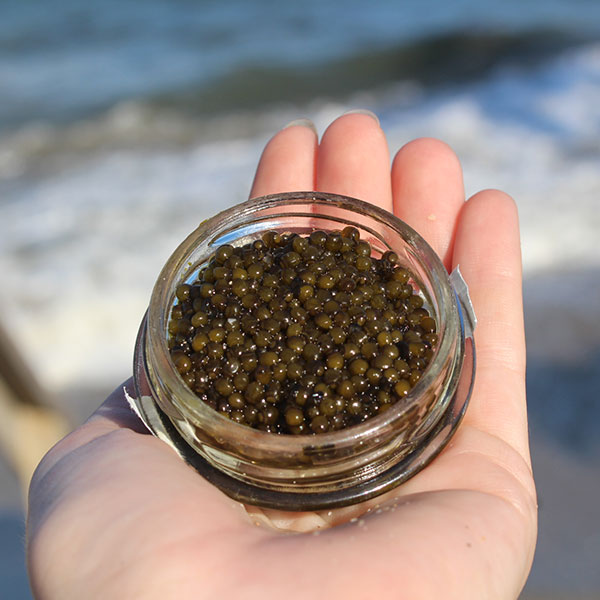Each original tin holds the eggs of an individual sturgeon. Caviar should never be “blended” or mixed with different fish. With the advent of aquaculture, a harvesting group of caviar-bearing sturgeon is almost always of the same age, size, & stock. They are also raised in the same conditions (water quality, temperature, etc.) and on the same diet. Biology, of course, can still play a part and make a unique “batch” per individual fish. Part of the initial grading process is to evaluate the quality and consistency of the original delivery. Rich will factor into account the size of the caviar grains (medium to large size) along with the color of the eggs, from light to dark.
By sampling the product, we are evaluating multiple factors – foremost the richness of flavor. Caviar – especially that of the Osetra sturgeon – should have a fresh, almost nutty flavor – and should be briny without being powerfully salty (“malossol” – Russian for “little salt” – is a common term used and is often on the caviar label itself.) The pleasing flavor needs to be equally offset by a firmness of egg texture – or the “pop” on the roof of the mouth – that is a traditional benchmark of superior caviar. Finally, the finish is evaluated on the palate – it should be creamy and flavorful, not bitter or “fishy.” All these factors play into the assessment of the quality grade assigned to the caviar.

